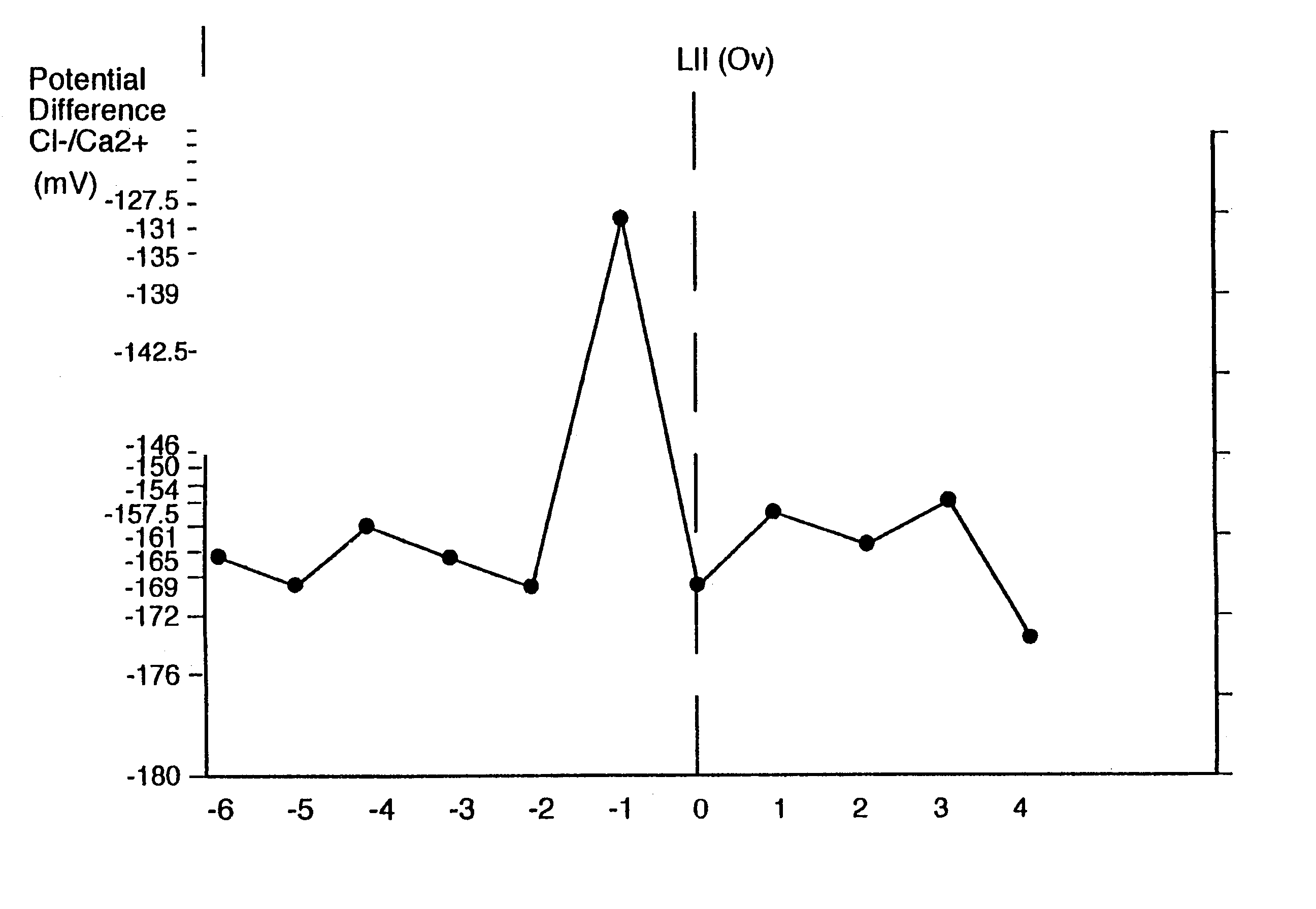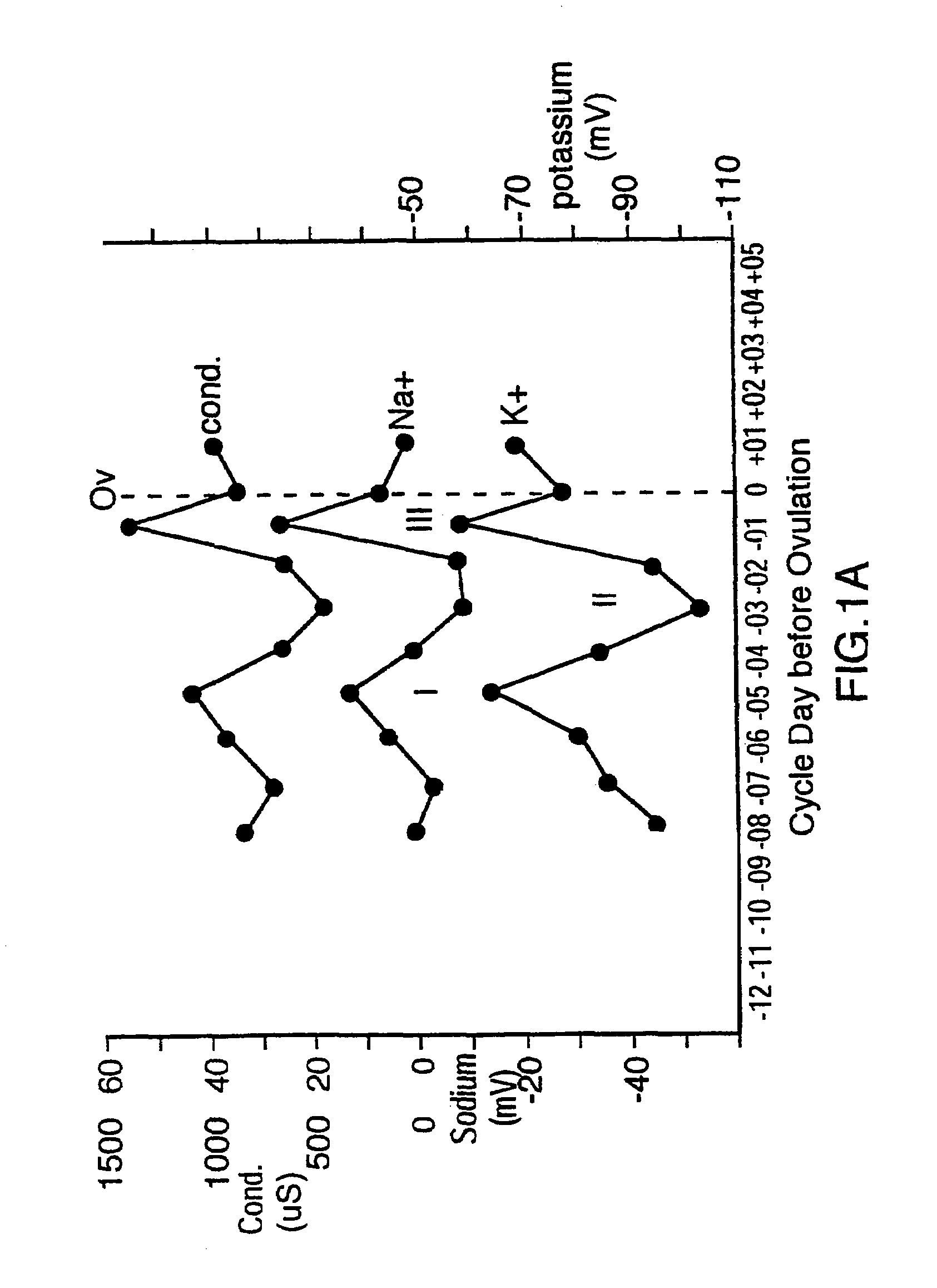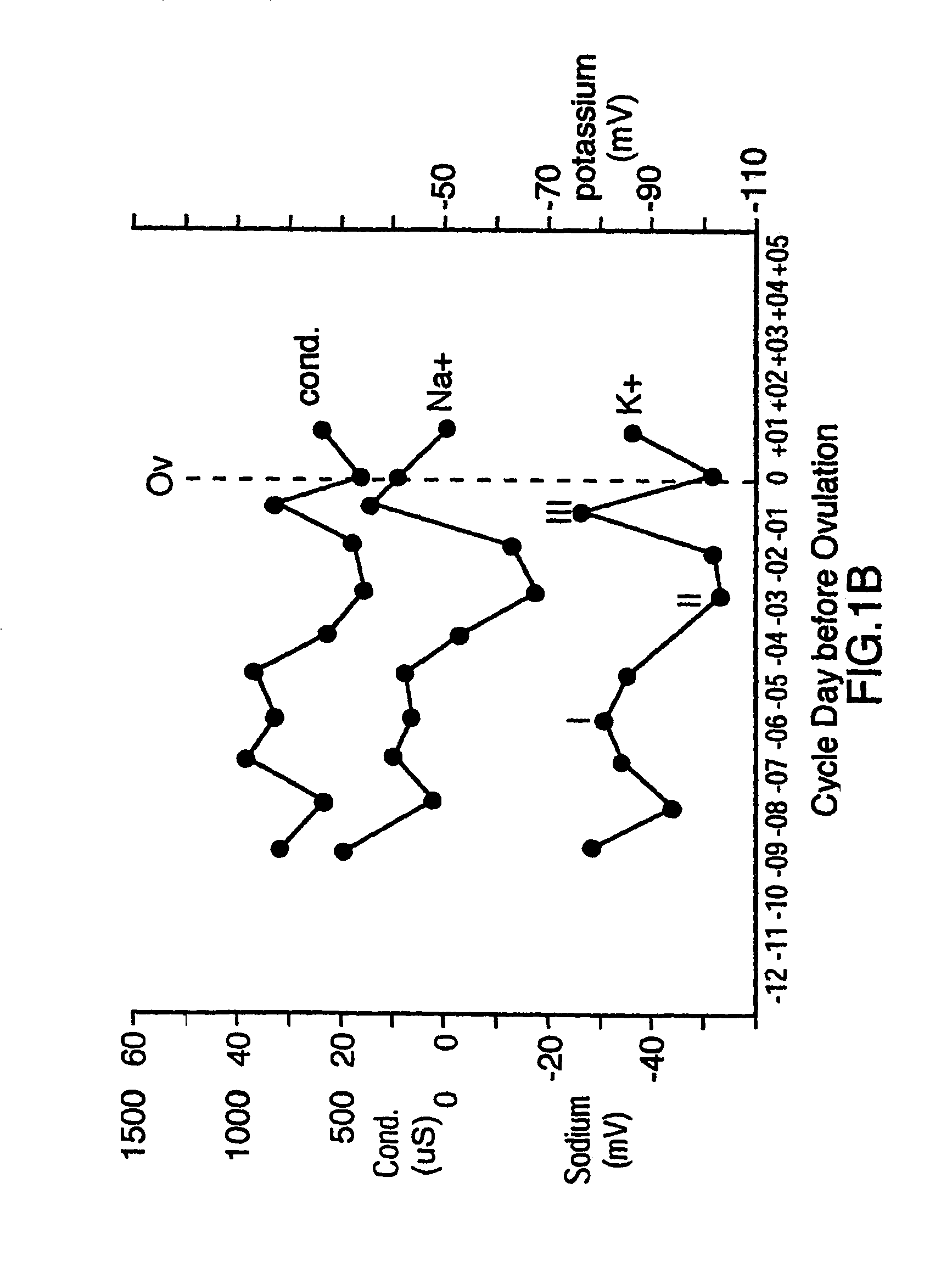Method and device for predicting the fertile phase of women
a technology for predicting the fertile phase and the female body, which is applied in the field of methods and devices for determining the fertile phase of women, can solve the problems of subjective errors in cervical mucus examination, the method is generally only accurate, and the inability to accurately predict the fertile phase, etc., to achieve accurate measurement, accurate ovulation prediction, and increased physical activity
- Summary
- Abstract
- Description
- Claims
- Application Information
AI Technical Summary
Benefits of technology
Problems solved by technology
Method used
Image
Examples
Embodiment Construction
[0038]The present invention involves a method and device to predict ovulation in female mammals, such as the female human, several days in advance by monitoring changes in eccrine sweat. Ovulation is preferably predicted in advance by at least one half of the time period that sperm is capable of surviving within the female mammal so that a larger portion of the fertile phase can be determined. In this way, the present invention provides a reliable self-monitoring personal use test to permit determination of substantially the entire fertile phase of the female. It can also be used by a physician in the treatment of female infertility since many diagnostic or therapeutic measures depend on the accurate prediction and detection of ovulation.
[0039]Eccrine sweat is a thin watery fluid which is secreted onto the surface of skin by the eccrine sweat glands. Generally, thick skin, such as the palms, is abundantly supplied by eccrine sweat glands, but they are also found in substantial numbe...
PUM
| Property | Measurement | Unit |
|---|---|---|
| time | aaaaa | aaaaa |
| time | aaaaa | aaaaa |
| concentrations | aaaaa | aaaaa |
Abstract
Description
Claims
Application Information
 Login to View More
Login to View More - R&D
- Intellectual Property
- Life Sciences
- Materials
- Tech Scout
- Unparalleled Data Quality
- Higher Quality Content
- 60% Fewer Hallucinations
Browse by: Latest US Patents, China's latest patents, Technical Efficacy Thesaurus, Application Domain, Technology Topic, Popular Technical Reports.
© 2025 PatSnap. All rights reserved.Legal|Privacy policy|Modern Slavery Act Transparency Statement|Sitemap|About US| Contact US: help@patsnap.com



